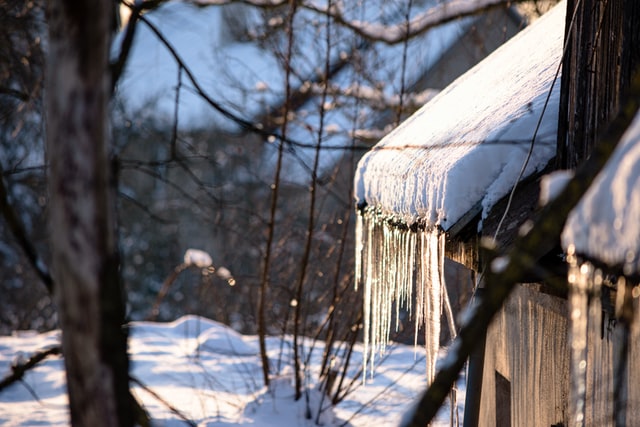Denver homeowners know that temperature fluctuations are common in the region, as are severe snowstorms. Sunshine can appear immediately after a snowstorm, melting much of the snowfall. If your roof has temperature disparities, these shifting weather conditions can lead to ice dams.
If you haven’t had to deal with ice dams on your roof, understanding this common roofing issue can help you preserve your roof’s lifespan. Additionally, keeping up with Denver roof maintenance can help you steer clear of winter roof damage like ice dams.
What Is An Ice Dam?
Ice dams can develop when it snows and your roof is uneven in surface temperature. Specifically, if the middle of the roof is warmer than the edges of the roof, the snow in the middle will melt and flow outward. Once the melted snow reaches the edges of the roof, which are significantly lower in temperature, it will refreeze and form a ridge of ice.
An uneven roof surface temperature can be caused by multiple different factors. Accumulated snow and the temperature outside can exacerbate the issue, but it’s typically caused by heat leaking out of your home. If heat seeps out of your attic to your roof, the center of your roof will warm up and create the risk of ice dam formation.
When roofing systems are flatter in pitch, ice dams are more likely to form. This is because the melted snow will be less likely to naturally flow off of the roof. Additionally, your gutter system may catch snow and ice, further expanding the ice of an ice dam.
Ice Dam Damage
There are multiple types of Denver roof damage that can result from an ice dam. The ice dam alone isn’t dangerous to your roof, but the consequences of the dam can reduce the longevity of your roof.
Insulation
An ice dam will trap melted snow on your roof. When this water accumulates behind the ice dam, it may sit there until the ice dam disappears. In the time that the water is on your roof, it may drip into the deeper layers of your roofing system and reach the insulation. As you’d probably expect, wet insulation isn’t effective at keeping heat in your home. But, given that the insulation becomes compressed when it’s wet, when the insulation dries, it will be thinner than it was before. The thinner the insulation, the less it will be able to prevent heat loss from your home. Heat loss makes it more likely that additional ice dams will form, creating a vicious cycle.
Rotting Wood
There are many components of your roofing system and attic that are likely constructed of wood. When wood gets wet, it starts to rot. As mentioned above, ice dams can lead to water penetrating your roofing system and reaching the interior of your home. This will get wooden wall framing, rafters, and roof decking wet, creating the risk for rot.
Paint Damage
Moisture and paint don’t go well together. If an ice dam causes water to leak into your home and reach painted interior walls, it could lead to paint damage. You may notice water stains, bubbling paint, or peeling paint if the walls are exposed to excess moisture.
Mold and Mildew
The pooled water behind an ice dam can create the ideal environment for mold growth inside of your roofing system. A mold problem inside of your roof may take a long time to notice, but it will likely extend into your home, too. If you notice mold on your walls or anywhere within your attic, your roof may be leaking and will require prompt Denver roof repairs.
Ice Dam Prevention
The best way to stop ice dams from forming on your roof is to regulate its surface temperature. High-quality insulation can effectively prevent heat from leaking out of your home and unevenly heating the surface of your roof. Make sure that your attic and roofing system are effectively insulated and have additional insulation installed as needed. If your insulation is old or damaged, you’ll need to have it replaced. Ensuring that your roof is ventilated will also help manage and balance out the surface temperature of your Denver roof.
To schedule roof repairs or learn more about how you can prevent ice dams from forming on your roof, contact Woodberg Roofing today.

